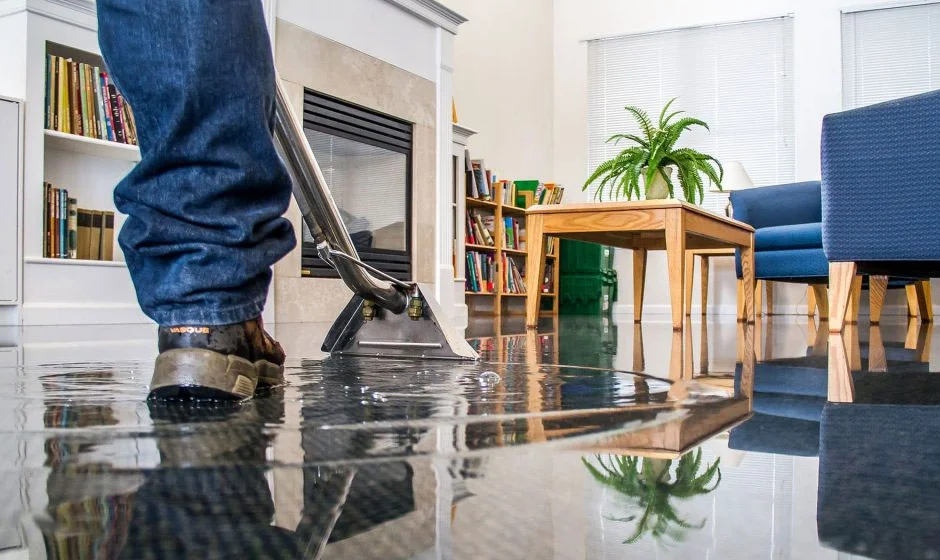Essential Steps for Restoring Your Property
Water damage is one of the most common and costly issues that homeowners and businesses face. Whether caused by a leaky pipe, a broken appliance, flooding, or a storm, water can quickly damage your property, lead to mold growth, and compromise the structural integrity of your home or building. Water damage restoration is a crucial process to address the damage, prevent further issues, and restore your property to its original condition. This article explores the importance of water damage restoration, the steps involved, and tips for preventing water damage in the future.

What is Water Damage Restoration?
Water damage restoration is the process of cleaning up, drying, and repairing a property affected by water. The goal of restoration is to return the property to its pre-damaged condition while mitigating further damage such as mold growth, corrosion, and structural weakening. Water damage restoration typically involves water removal, dehumidification, cleaning, and repairing or replacing damaged materials. It may require professional help, particularly in severe cases where extensive damage has occurred.
The Importance of Water Damage Restoration
- Prevents Mold Growth: Water damage, if left untreated, can quickly lead to mold growth. Mold thrives in damp, humid environments, and it only takes 24 to 48 hours for mold spores to begin spreading in wet conditions. Mold not only damages surfaces but can also cause health issues, including respiratory problems and allergies. Proper restoration ensures that moisture is removed, preventing mold from taking hold.
- Minimizes Structural Damage: Water can weaken and compromise the structural integrity of a building. Wood, drywall, insulation, and even concrete can be damaged by prolonged exposure to water. Swift water damage restoration helps prevent further deterioration, potentially saving homeowners from costly repairs and ensuring the building remains safe to inhabit.
- Restores Property Value: Water damage can severely reduce the value of a property, especially if the damage is visible or extensive. By addressing water damage quickly and thoroughly, you can prevent long-term depreciation and maintain the value of your home or business.
- Prevents Secondary Damage: Water damage can lead to secondary problems such as electrical hazards, rusting appliances, and damage to personal items like furniture, electronics, and documents. A professional restoration company will ensure that all affected areas are properly dried and sanitized, reducing the risk of further damage.
- Health and Safety: Excess moisture can create an environment where bacteria and pathogens flourish, leading to potential health risks for inhabitants. Water damage restoration professionals not only remove the water but also disinfect and sanitize affected areas to ensure a safe environment.
Types of Water Damage
Water from a clean source, such as a broken water pipe or a faucet leak. This type of water damage poses the least health risk but still requires prompt attention to prevent mold and other secondary issues.
Water that has been contaminated with contaminants such as soap, food waste, or detergent, but does not pose an immediate health threat. Examples include water from washing machines or dishwashers.
Highly contaminated water that comes from sources such as sewage backups, flooding from rivers, or standing water that has become contaminated with harmful bacteria, chemicals, or other pathogens. This category requires immediate professional intervention and decontamination.

Contact Us
The Water Damage Restoration Process
Water damage restoration is a detailed and carefully managed process designed to return a property to its original condition. While the specifics may vary based on the extent of the damage, the general steps typically include the following:
Initial Assessment and Inspection
The first step is an inspection to assess the extent of the water damage. Using moisture meters, infrared cameras, and visual checks, professionals locate hidden water, identify the source, and note any potential hazards like mold growth or contamination risks.
Water Extraction
Once the assessment is complete, standing water is removed using industrial pumps and vacuums. Quick extraction prevents further damage to floors, walls, and belongings and sets the stage for effective drying and cleaning.
Removal of Unsalvageable Materials
Damaged materials such as soaked drywall, insulation, carpeting, or flooring may need to be removed. This step prevents mold development and speeds up the drying process by eliminating moisture-retaining materials.
Drying and Dehumidification
High-powered air movers and dehumidifiers are used to dry the area thoroughly. This step can take several days and is essential to prevent long-term structural damage and microbial growth.
Cleaning and Disinfection
All affected surfaces are cleaned and sanitized using specialized cleaning agents and antimicrobial treatments. This ensures the removal of bacteria, dirt, and potential contaminants, especially if the water came from a sewer or storm source.
Mold Prevention and Remediation
If mold is already present or conditions favor its growth, professionals will treat the area with mold inhibitors or remove mold-affected materials. This step protects the property and the health of its occupants.
Repairs and Reconstruction
With the area clean and dry, necessary repairs begin. This may involve installing new drywall, flooring, insulation, or plumbing. The goal is to restore the damaged sections to their pre-loss condition, both structurally and visually.
Final Inspection and Documentation
An inspection is performed to verify the property is fully restored. Moisture levels are tested, repairs reviewed, and the property deemed safe. A detailed report is provided to the property owner for insurance claims or future reference.

